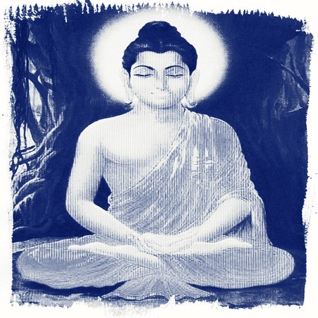
Maha Satipatthana Sutta
The Greater Discourse on Steadfast Mindfulness
Please practise in accordance with this Mahàsatipaññhàna Sutta so that you can see why it is acknowledged as the most important Sutta that the Buddha taught.
Try to practise all the different sections from time to time as they are all useful, but in the beginning start with something simple such as being mindful while walking (see Iriyàpatha Pabba), or the mindfulness of in and out breathing (see Anàpàna Pabba). Then as you practise these you will be able to practise the other sections contained within this Sutta and you will find that all the four satipaññhànas can be practised concurrently.
A sutta should be read again and again as you will tend to forget its message. The message here in this Sutta is that you should be mindful of whatever is occurring in the body and mind, whether it be good or bad, and thus you will become aware that all conditioned phenomena are imper- manent, unsatisfactory and not-self.
Thus have I heard. The Bhagavà was at one time residing at the market-town called Kammàsadhamma in the Kuru country. There the Bhagavà addressed the bhikkhus saying “O, Bhikkhus”, and they replied to him, “Bhadante,”. Then the Bhagavà said:
Bhikkhus, this is the one and the only way for the purification (of the minds) of beings, for overcoming sorrow and lamentation, for the cessation of physical and mental pain8, for attainment of the Noble Paths. and for the realization of Nibbàna. That (only way) is the four satipaññhànas.
What are these four? Here (in this teaching), bhikkhus, a bhikkhu (i.e. a disciple) dwells perceiving again and again the body (kàya) as just the body (not mine, not I, not self, but just a phenomenon) with diligence, clear understand- ing, and mindfulness, thus keeping away covetousness and mental pain in the world; he dwells perceiving again and again feelings (vedanà) as just feelings (not mine, not I, not self but just as phenomena) with diligence, clear under- standing, and mindfulness, thus keeping away covetousness and mental pain in the world; he dwells perceiving again and again the mind (citta) as just the mind (not mine, not I, not self but just a phenomenon) with diligence, clear understanding, and mindfulness, thus keeping away covetousness and mental pain in the world; he dwells perceiving again and again dhammas as just dhammas (not mine, not I, not self but just as phenomena) with diligence, clear understanding, and mindfulness, thus keeping away covetous- ness and mental pain in the world.
Bhikkhus, this is the one and the only way for the purification (of the minds) of beings, for overcoming sorrow and lamentation, for the cessation of physical and mental pain8, for attainment of the Noble Paths. and for the realization of Nibbàna. That (only way) is the four satipaññhànas.
What are these four? Here (in this teaching), bhikkhus, a bhikkhu (i.e. a disciple) dwells perceiving again and again the body (kàya) as just the body (not mine, not I, not self, but just a phenomenon) with diligence, clear understand- ing, and mindfulness, thus keeping away covetousness and mental pain in the world; he dwells perceiving again and again feelings (vedanà) as just feelings (not mine, not I, not self but just as phenomena) with diligence, clear under- standing, and mindfulness, thus keeping away covetousness and mental pain in the world; he dwells perceiving again and again the mind (citta) as just the mind (not mine, not I, not self but just a phenomenon) with diligence, clear understanding, and mindfulness, thus keeping away covetousness and mental pain in the world; he dwells perceiving again and again dhammas as just dhammas (not mine, not I, not self but just as phenomena) with diligence, clear understanding, and mindfulness, thus keeping away covetous- ness and mental pain in the world.

